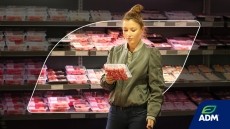Are you targetting the right 'consumer type' for meat alternatives?

Writing in Food Policy, the UK-based team noted that while there is increasing awareness of the negative implications of meat consumption for the environment and human health, and a growing number of healthy and eco-friendly alternatives, very few shoppers have been convinced to quit meat.
Indeed, the team noted that Mintel data shows how, although there has been some growth in the consumption of meat substitutes in the UK and Europe as a whole, the market is still very small at 3.6% of the market value of meat.
“The perceived health, social and environmental concerns associated with high levels of meat consumption have stimulated calls to reduce the quantity of meat we eat and created an on-going global debate among policy makers, practitioners and academics,” wrote the team, led by Chrysostomos Apostolidis.
While many plant-based meat substitutes have been identified by researchers and industry as healthy sources of protein that in comparison to meat offer social, environmental and health benefits, the team noted there has been a lack of research on the role they can play in the policy agenda “and how specific meat substitute attributes can influence consumers to replace partially replace meat in their diets.”
Six consumer types
Apostolidis and his colleagues examined the preferences of 247 UK consumers for different attributes of meat and meat substitute products, and developed consumer segments based on these preferences.
“Although consumer preferences for meat substitutes are currently very low, there are several opportunities to encourage a decrease in meat-based diets through meat substitution,” they said.
Their results indicated that meat substitution strategies should focus on specific consumer segments instead of targeting the ‘average consumer’, as the preferences of consumers differ within the different segments.
“The identification of six distinct segments has revealed the basic characteristics of these consumers which are relevant to future food policy,” they said – noting that the six consumer segments – price conscious, healthy eaters, taste driven, green, organic and vegetarian consumers – have different socio-demographic characteristics and meat consumption patterns and as such should be targeted by policy makers.
Is mince the key?
Furthermore, the team identified the role that specific attributes of meat and meat substitutes play in influencing consumer choices.
Using food labels and mince (ground meat), the team found that the type of mince, fat content, country of origin and price are the major factors that influence choice. Carbon footprint, method of production and brand play a secondary role in determining consumers’ choices of meat/meat substitutes, they noted.
"Our results indicate that cheap, low fat, beef mince produced in the UK, with a low price is the preferred mince product of respondents. The results also indicate that replacing meat with meat substitutes will be challenging, as meat substitutes have the lowest associated utilities for any type of meat,” wrote the researchers.
“Our results have implications for the general public, policy makers, practitioners and producers of meat and meat substitutes,” the UK researchers commented.
Indeed, they concluded that future interventions and policies aimed at reducing meat consumption, including labelling, financial incentives, educational campaigns and new product development “will be more effective if they are holistic and target specific consumer segments, instead of focus on the average consumer.”
Source: Food Policy
Published online ahead of print, doi: 10.1016/j.foodpol.2016.11.002
“Should we stop meating like this? Reducing meat consumption through substitution”
Authors: Chrysostomos Apostolidis, et al




























